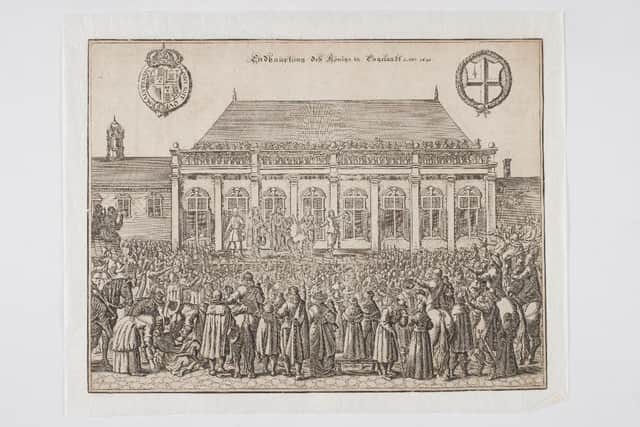The gruesome business of public execution put under the microscope


He was then hanged but not enough to die so that he was alive when executioners castrated him, cut out his entrails then his heart, beheaded him, burnt the entrails and then carved up his body, writes Andrew Southam.
They placed Wallace’s severed head on a spike at London Bridge and sent his other body parts to Newcastle, Berwick, Stirling and Perth, the cities he had scorched.
Advertisement
Hide AdAdvertisement
Hide AdThis was the gruesome practice of public execution revealed in spine-tingling detail at the London Museum of Docklands’ new exhibition, ‘Execution:700 years of public executions’.


Britain’s first recorded public execution occurred in 1196 and by 1723 was the punishment for 200 crimes popularly known as the ‘Bloody Code’ which included not only high treason but ‘taking away any maid, widow or wife’ or ‘maliciously cutting down any trees planted in any avenue or growing in any garden, or plantation’.
London was the most prolific execution location in Britain and the ‘bloodiest’ in Europe, most prominently at Tyburn, near Marble Arch, and then from 1783 outside Newgate prison.
Stomach-churning punishments awaited the convicted. Henry VIII introduced boiling alive for poisoners after cook Richard Roose poisoned the Bishop of Rochester’s porridge in 1531 – the bishop and his guests survived but two beggars given the food as charity didn’t. Roose was dipped up and down in boiling water for two hours at Smithfield until dead.